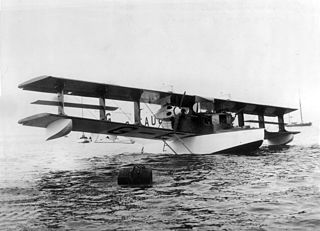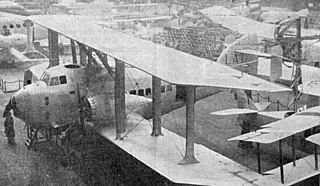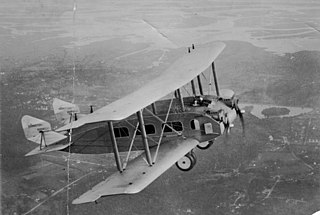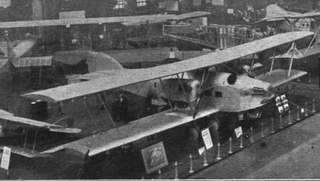Related Research Articles

The Saunders Kittiwake was a British amphibian flying-boat built by S.E. Saunders at East Cowes, Isle of Wight.

The Latécoère 4 was a three-engined, 15-passenger biplane built in France in the early 1920s. It proved difficult to fly and was discontinued, though a second machine was completed as the Latécoère 5 bomber.

The Stearman LT-1 was a late 1920s American biplane, carrying four passengers plus mail.

The Burnelli RB-1 was a US twin engine biplane airliner prototype from 1920, incorporating a lifting body fuselage.

The Wibault 2, Wib 2 or Wib 2 BN.2 was a single engine biplane aircraft designed and built in France in the early 1920s. It was intended as a heavy night bomber, though a thirteen-seat passenger version was proposed. Only one was built.

The Potez XVIII was a French airliner from the early 1920s, a three-engine biplane carrying up to twelve passengers.
The Potez 26 was a single seat fighter aircraft designed and flown in France in the mid-1920s. It did not reach production.
The Caudron C.91 was a French single engine biplane with an enclosed passenger cabin seating four. It first flew in 1923.

The Caudron C.67 was a simple single seat biplane with a low powered engine. It was built and flown in France in 1922.

The Caudron C.43 was the first French five-engined aircraft, a biplane intended for passenger transport or military use and multi-engined for safety. A development of the three-engined Caudron C.39, it had one tractor configuration engine in the nose and two push-pull pairs between the wings. It was capable of carrying eight passengers but was not developed.

The Caudron C.39 was a French three-engined biplane with a cabin for six passengers when the aircraft was equipped as a landplane or four passengers when on floats. It was flown with some success in competitions in 1920 and 1921.
The Caudron C.37 was a French three-engined biplane passenger transport, built in 1920. It could carry six passengers.

The Caudron C.25 was a large, three-engined, biplane airliner, designed and built in France soon after the end of World War I. Its enclosed cabin could accommodate up to eighteen passengers.

The Heinkel HD 20 was a twin engine, three seat German biplane built in 1926 for civil survey work.
The Caproni Ca.66 was an Italian night bomber designed to reequip the post-World War I Italian Air Force. Only two examples of the four-engined biplane were built.
The Caproni Ca.66 and Caproni Ca.67 were Italian night bomber aircraft designed to re-equip the post-World War I Regia Aeronautica.
The Caudron C.92 was a passenger transport built by Caudron in 1925, powered by a 370 hp (280 kW) Lorraine-Dietrich 12D. Only one was built, and it was discarded in July 1934.

The Zeppelin-Lindau Gs.I, often known post-WWI as the Dornier Gs.I after its designer Claude Dornier, was a civil flying boat developed immediate post-war from a military prototype. Its passenger cabin seated six. Only one was completed, and that was eventually scuttled to keep it out of Allied hands. Another of the military prototypes was intended to have a bigger, nine seat cabin and other refinements but the Gs.II was incomplete when discovered by Allied inspectors.

The 1929 Curtiss Model 53 Condor, also known as the Curtiss Model 53 Condor 18 or the Curtiss CO Condor, was a civil passenger version of the Model 52 Condor bomber. A twin-engined biplane, it carried 18 passengers.
The Itoh Emi 13 was a two seat Japanese trainer, designed for the Itoh flying school and introduced in two versions in 1920 and 1921.
References
- 1 2 "Friesley Falcon". Community Memorial Museum of Sutter County. Retrieved 12 February 2012.CS1 maint: discouraged parameter (link)
- 1 2 3 4 5 "The Friesley Falcon cabin biplane". Flight . Vol. XIV no. 1. 5 January 1922. pp. 5–6.
- 1 2 3 4 5 6 "Friesley Falcon". Aerofiles. Retrieved 12 February 2012.CS1 maint: discouraged parameter (link)